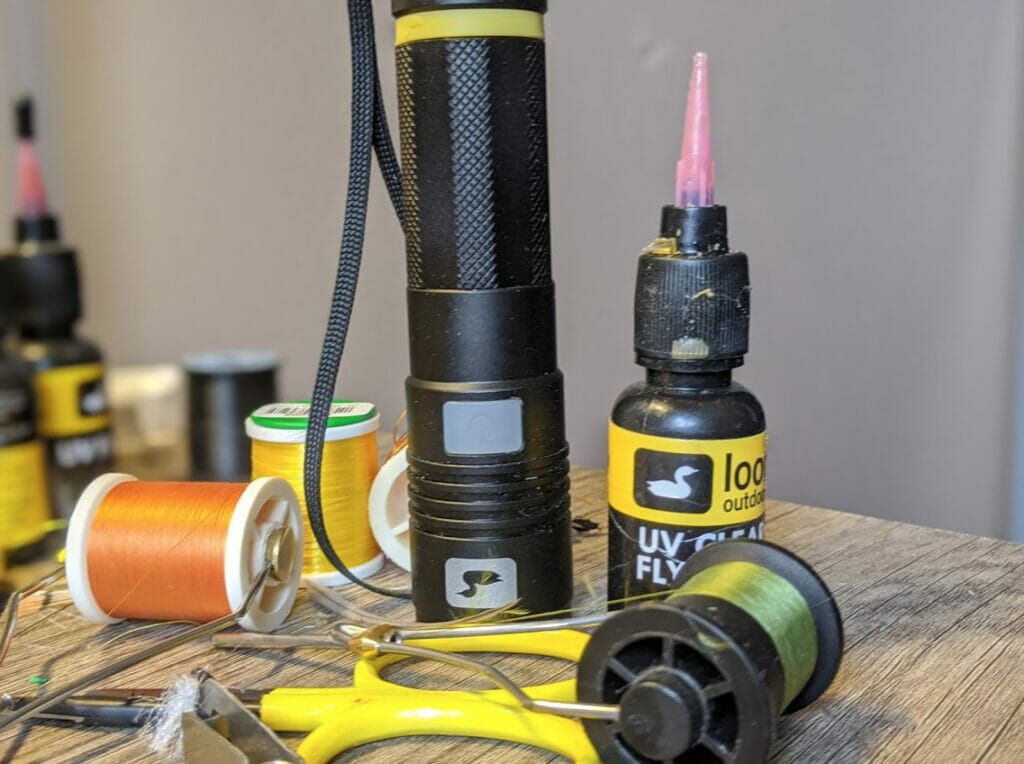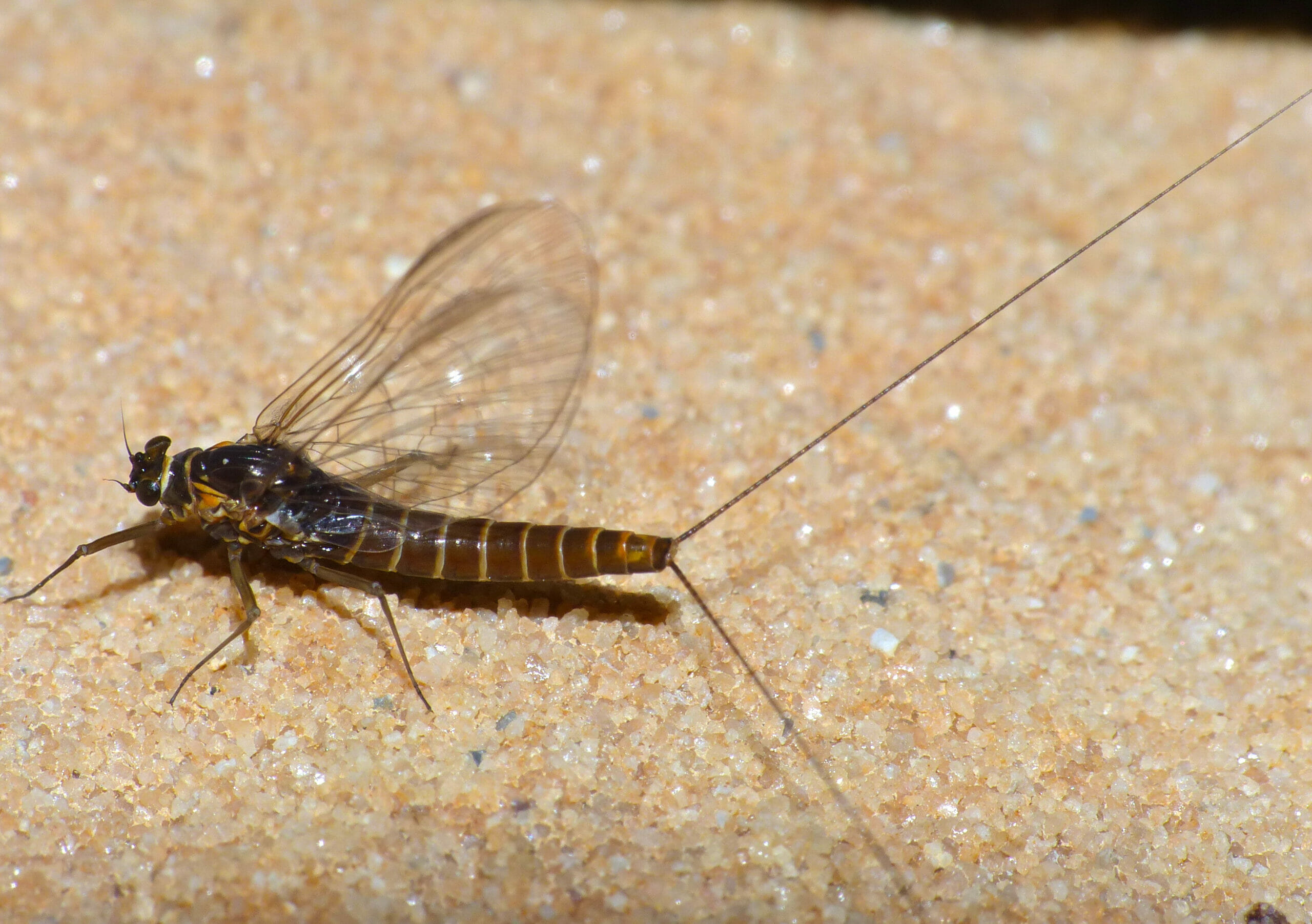I’ve always been something of a ham-handed fly tier, and, generally speaking, the bigger the fly, the easier it is for me to tie. I’m a big guy at six-foot-five, and my hands correspond to my height. They just aren’t meant for detail work.
But I live in eastern Idaho, and right about now, my local rivers are starting to burst with tiny little baetis mayflies—Blue-winged Olives. As my son and I drove west toward Grand Teton National Park the other morning, one lighted on my windshield, likely emerging from a local irrigation ditch some time earlier and mistaking the truck’s glass for a clear body of water upon which to lay eggs.
“It’s so small,” Cameron remarked as I pointed it out to him. “Fish really eat that?”
“They eat a lot of them,” I said, wondering if I could somehow “get sick” and disappear up the South Fork to cast BWOs to rising trout that very afternoon. Responsibility kicked in, and after dropping Cameron off at his job in the park, I headed back over Teton Pass and was at my desk Monday morning working, but with a slight grudge.
It wouldn’t have been wise, anyway. My fly boxes are still in summer mode—fat ants and hoppers are mixed among a predictable assortment of Stimulators and caddisflies, attractor nymphs and the like. I’d have had to run down to the local fly shop and buy $25 worth of size 20 BWOs to get through the day.
So, I sat down at the vise the other night and started working up a dozen small mayflies, much to my own chagrin. This isn’t the kind of fly tying I enjoy. It’s dutiful.
As I noted, size 20 is really small for me. I’m honestly not sure how anyone ties, with any regularity, flies this size or even smaller without going completely blind. And, frankly, size 20 is about as small of a fly as I’ll put on the end of a tippet and still really enjoy the fishing. Having to size down even farther feels so technical … so desperate to match some microscopic critter drifting in the water column, that I just don’t glean much fun from it.
(I’m talking to you, you size 24 Zebra Midge fanatics).
But, on the South Fork, these tiny baetis imitations do, indeed, work, and size 20 is almost a perfect match for the naturals that start to pop on those blustery fall afternoons.
My first attempt, years ago, at tying flies this small wasn’t a complete disaster, but I did find that my flies, on particularly good days, worked for about two fish before they just fell apart. For flies this small, I use 8/0 thread and hackles that match the hook size (or maybe slightly bigger, because they help me see the fly on the water—if I’m lucky). Inevitably, after a fat cutthroat or brown trout zeros in a fly this small, it starts to unravel.
Last fall, as I readied myself for BWO season (and it is a season on the South Fork), I took to finishing these small flies with the smallest dollop of thin UV-reactive resin I could squeeze out of the bottle (Loon makes a great thin UV resin, by the way). At first, predictably, I used too much and covered the hook eye. Eventually, I got to where I could place just the right amount ahead of the hackle and behind the hook eye before I whip-finished the fly. Then, I’d finish the fly, coating the entire finish knot in the resin. A quick shot of UV light is all it takes to really harden up the finish.
The result? A much more durable fly that lasts more than a fish or two.
I’m sure this is hardly a revelation for a lot of really die-hard fly tiers, but for those like me who dally in fly-tying kind of on a tie-as-you-go basis, I found this method a bit easier to use when putting the finishing touches on such a small pattern.

I suppose this was, more or less, a natural progression for me. I’ve been using UV resins on my flies for several years now, all with the intent of making flies last longer on the water. For streamers, the UV finish actually serves to brighten up heads with some shine, while also improving durability. For larger dries, like salmonfly imitations, hoppers, Stimulators and Trudes, a small dollop of resin does, indeed, add to a flies durability on the water without compromising their ability to float.
It was only a matter of time before I went full-on UV for the smallest flies I’ll tie.
It may not be for everyone, but it works for me. If you’re having a hard time keeping small flies intact on the water, give the head a small dose of thin UV resin and see if it doesn’t help you spend more time fishing, and less time changing flies.



